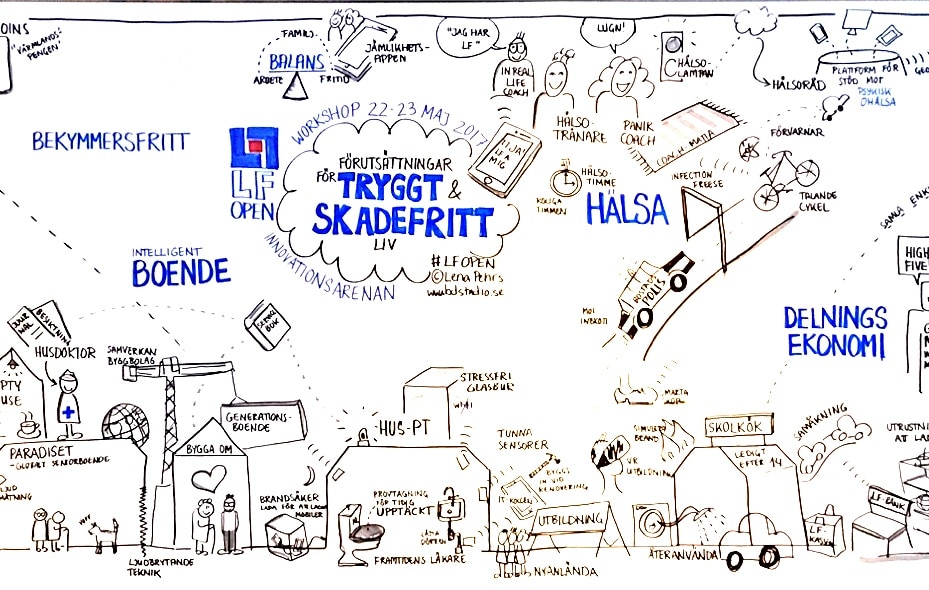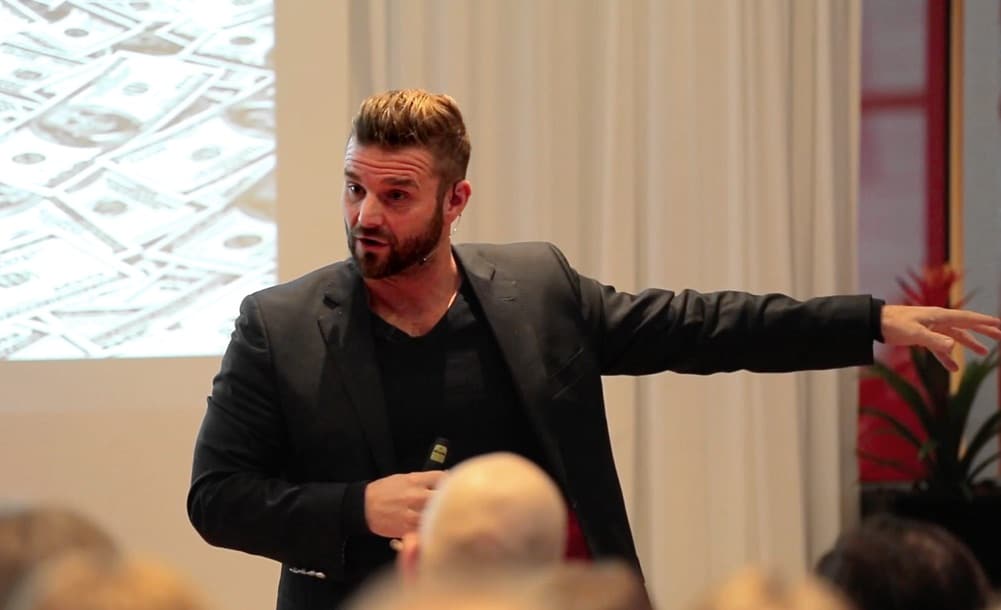
The future of healthcare and insurance
Visions for change in Swedish health care
Following on from our recent collaboration, in which we developed Lev Friskt, Länsförsäkringar AB Head of Innovation, Niklas Huss, shared his thoughts and ideas at our breakfast seminar. This is what he had to say.
I was recently in San Francisco and Silicon Valley on a leadership course. If you want to know what’s going to happen in digitalisation, it’s the place to be – or that’s what we’re led to believe.
During the trip I visited the “Plug and Play Fall Summit 2018” one of the biggest start-up launch scenes in the world. Most of the participants I spoke to had thought insurance was lagging behind other industries when it comes to digitalisation – which when you work for an insurer isn’t the great to hear.
Insurance 101
The shared point of view seemed to be that insurance is one of, if not the, most out-of date industries around. That doesn’t mean to say there aren’t lots of people interested in changing this, far from it, many start-ups and enterprises understand there is an opportunity to shake up the industry.
However, the ideas I heard didn’t live up to my expectations. There was a chat bot here and a bit of AI there, but it was the same basic concept that the industry has always provided – reactive insurance products. Products that, by their very nature, are a little boring. You sign a piece of paper – or rather a digital document – and then, when something happens and you have to make a claim, you receive an insurance payment. It’s insurance 101.

Implementing cultural change
The same kind of reactive thinking exists in healthcare today. And I want to change it. And to do that we need to start changing the way we look at healthcare. That’s one of the reasons I chose to work at Länsförsäkringar.
The future vision for Swedish healthcare is “to be the best at e-health in 2025.” This vision won’t stop us from getting ill, which would reduce the need for care. When diseases such as diabetes explode in the community as is happening now, we need a different vision.
What if we had a vision of zero tolerance for diabetes? We would be forced to redefine the financial models. In Sweden, focus isn’t on proactive healthcare; people are paid to treat the ill or injured, not to prevent illness or injury. But any such change is unlikely to come from within the healthcare sector, because it’s already highly treatment-focused. It’s unthinkable for healthcare professionals to deny people the care they need in an emergency crisis – and nor should it be. But this shouldn’t be the only form of treatment. I envisage an extra layer of treatment. Let’s call it the “health defence” organisation, which would be given a budget for qualified staff to work with prevention. This way we could relieve the healthcare system and allow healthcare workers to focus on those that need the most care.
But of course this type of change can’t happen overnight. While working at the Swedish tax authority we implemented a cultural change – moving the organisation from thinking like a “control authority” to acting like a service provider. It was a journey that took about twelve years and to be honest it’s still ongoing. It’s not easy to change the culture of an organisation that has worked in the same way, with essentially the same activities, and that is measured on the same outcomes, for many many years. But it’s worth it when you succeed.

Five focus areas for change
I believe we all have to work at changing our mind-set on a daily basis. We have to push ourselves beyond our comfort zones and expand our mental barriers. While working with innovation at Länsförsäkringar I’ve identified five focal areas to help us do this.
1. Identify DNA and build a proud culture
When I started at Länsförsäkringar, we needed to create a clear mission for innovation. We needed to challenge the norm and transition the company without loosing site of where we come from. Länsförsäkringar was founded two hundred years ago by farmers who decided it was better to share the risks of working in the often unpredictable agricultural industry. This movement is now a nationwide and customer-owned company, with millions of customers. The farmers had a vision to change things for the better, what better place then to revolutionise the industry and transform society?
Two hundred years ago, we shared the risk, today we can minimise it by working with behavioural change. By helping people to drive more safely or understand how different behaviours can affect the body, for example.
2. Focus
Länsförsäkringar is a cooperative made up of an insurance provider, a credit company, a bank, a pension provider, and several health companies. This is an enormous strength. There are many business models we can work with to help our owners, which as a cooperative are also our customers.
To stimulate change in the right direction, you have to embrace new realities and work according to an organisation’s existing strengths. Länsförsäkringar’s strengths, for example, lie in the cooperative model, the expansive national network, the different business models in use at the company, and the synergies that can be developed and exploited.
3. Create an innovation process
Another important step towards creating change within government organisations and companies is to prevent development from occurring in silos. This is what typically happens in innovation hubs and departments. A lot of creative solutions are generated, but nobody else in the organisation is included. This can lead to resentment among staff and fear of the unknown as change is implemented – the last thing you want to do is lose good staff because of this. If development is an organisational process, and employees feel like they have a voice, they are more likely to buy into and adopt it. That’s why I try to involve the entire Länsförsäkringar organisation in the innovation process.
Innovation per se has also been redefined at Länsförsäkringar, rather than KPIs and goals, our employees have agreed on how to get the best results. We also run inclusive and open innovation programmes together with external partners and customers to find the best future services to meet customers’ needs and challenges.
4. Dare to test!
Dare to test through pilots together with customers, experts, partners, suppliers and startups. Dare to make mistakes, and welcome failure. Dare to challenge your beliefs and way of thinking. This will all lead to relevant insights and become a key part of your future success. One way we do this is though our “Innovation Open” where we invite all the groups mentioned above, and develop new innovation ideas. This lead to the launch of the Lev Friskt (Live Healthy) app.
5. Use data effectively
I can’t stress enough how important it is to use data, and by that I mean collect and analyse it from day one of a project. Also don’t be afraid to change direction during a pilot or test project if it’s with good reason. The data you get can guide you in this process. In the beta testing of Lev Friskt we had a user feedback loop that guided us and led to new features being developed, launched and analysed. Live testing of prototypes give you the ability to do this.
“At Stanford University I met so called ‘top-students’ who weren’t interested in snagging a top job on Wall Street or starting a unicorn company that could later be sold for billions of dollars. They were keen to help improve the world.”
Niklas Huss Länsförsäkringar AB, Head of Innovation
Finally…
In the future, we will move from reactive to proactive, from products to services, from focusing on risk and cost to focusing on changing behaviours, from people to algorithms, from general services to individual services, from pre-studies to prototyping, and from doing everything ourselves to building ecosystems. I’ve talked a lot about data, but the quality of the data plays a huge role. We need to stop drowning in data and start swimming in information!
Related reading
We love to write about what we do, what we learn along the way and what we play with.